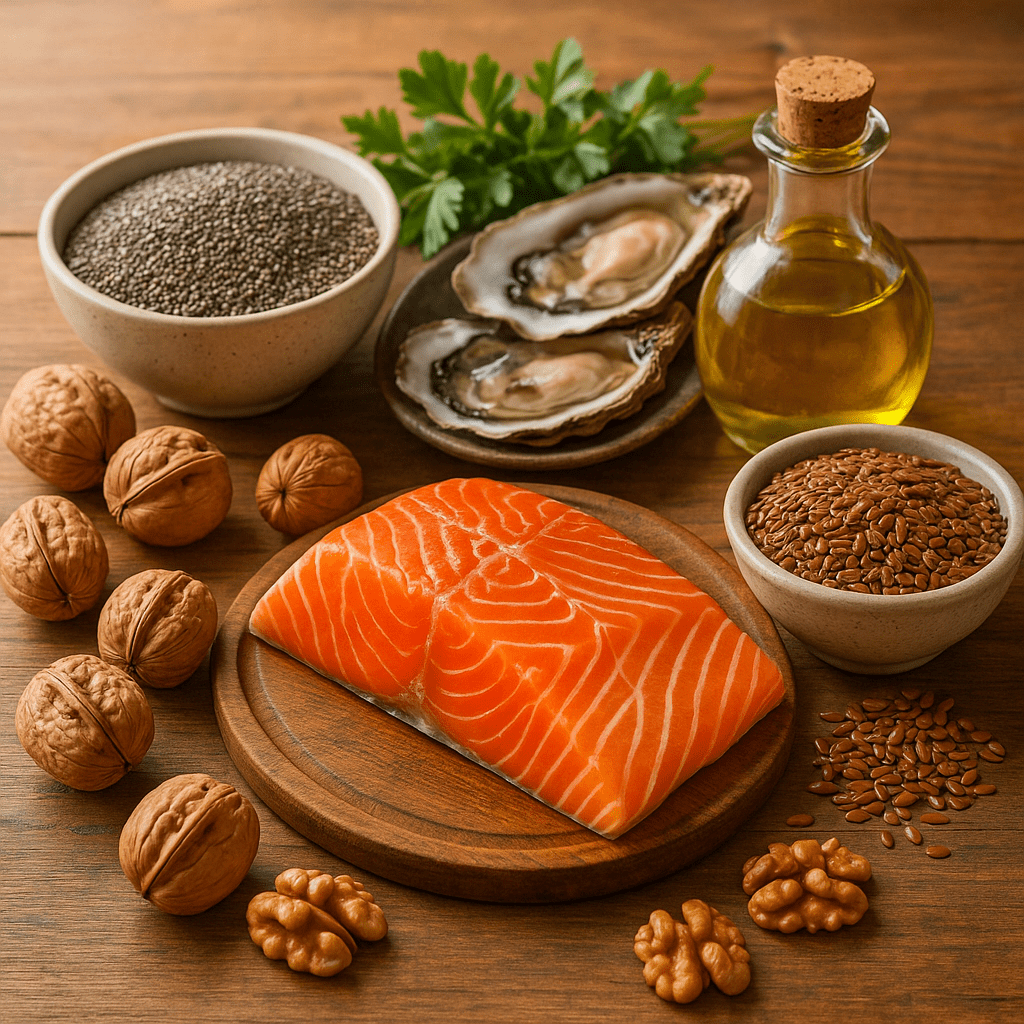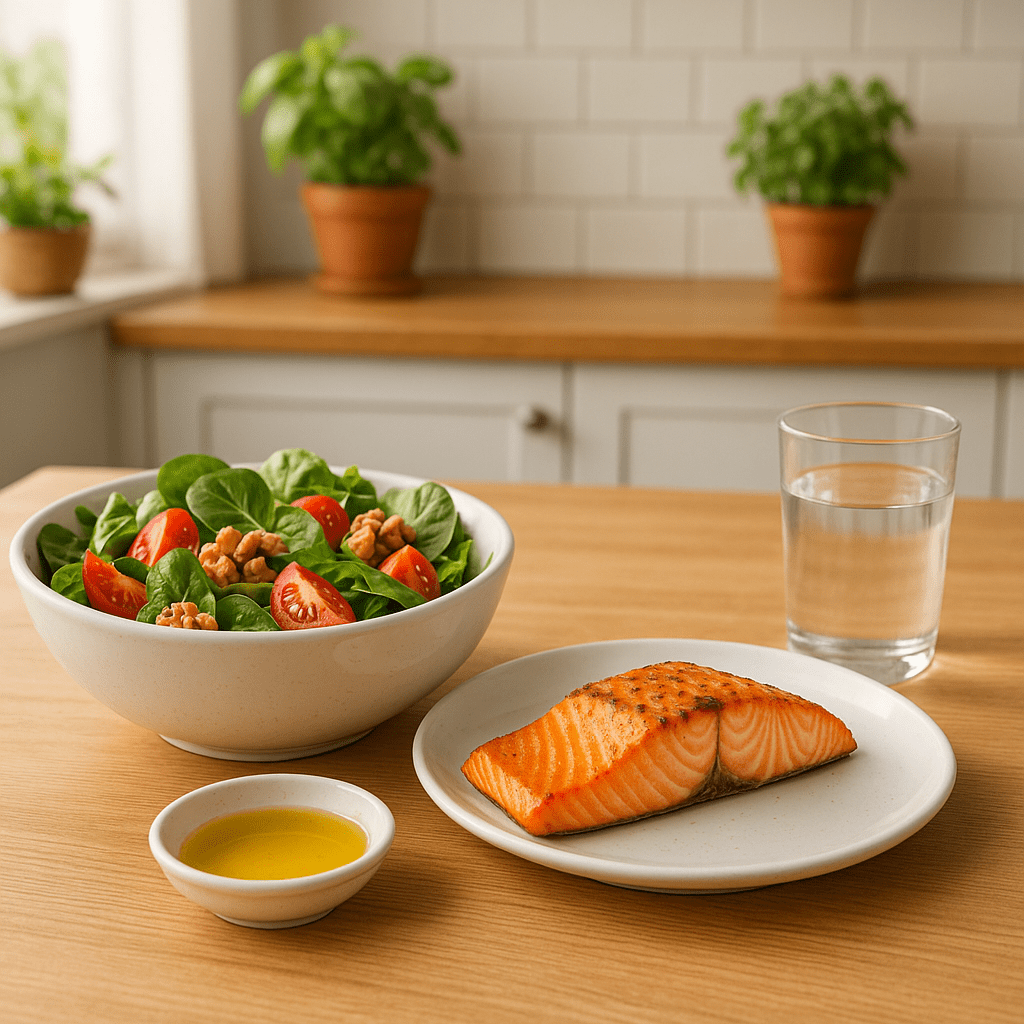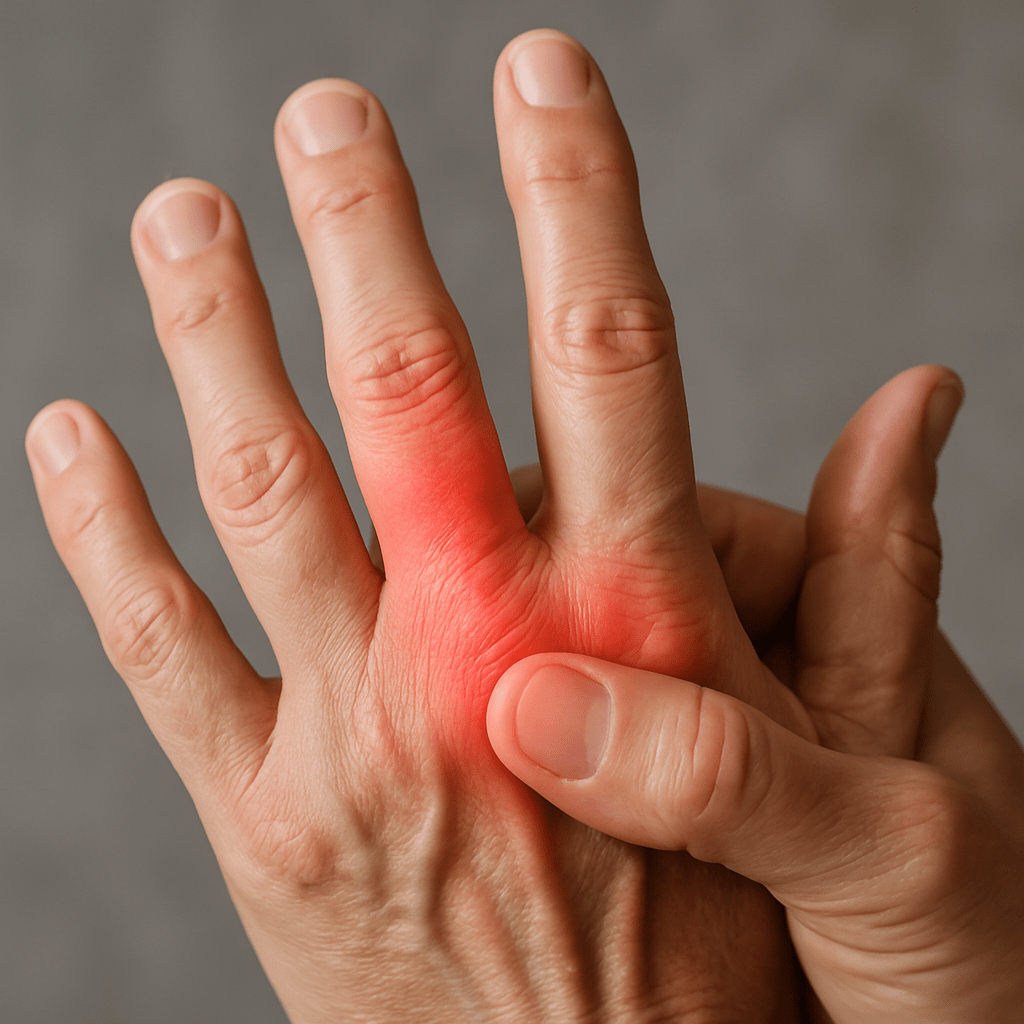Finger joint pain is a common ailment that can significantly affect a person’s daily life and work capacity. This pain is not only an unpleasant sensation, but also a signal that certain pathological processes are taking place in the joints. Finger joint pain can occur for various reasons – from simple fatigue to serious inflammatory or degenerative diseases. The intensity and nature of joint pain can vary greatly, so it is important to recognize its causes and seek medical help in a timely manner.
The joints of our fingers are among the most complex and most used parts of the body – they perform many functions from small movements to heavy physical work.

Therefore, joint damage is common, especially in older people. Supplements can be one way to help joints stay healthy, but it is important to understand the basic mechanisms of pain and treatment principles.
In this article, we will discuss the main causes of pain in the joints of the fingers, the most common symptoms, diagnostic methods, treatment methods and prevention measures. You will learn when it is necessary to consult a doctor, what procedures can help reduce pain and how your daily habits can contribute to joint health.
Main causes of pain in the joints of the fingers
Pain in the joints of the fingers can occur for many reasons, which are divided into several main groups. Understanding what causes the pain is the first step towards appropriate treatment.
Trauma
One of the most common causes of acute joint pain is mechanical damage to the joint. These can include:
- dislocations or sprains – often during sports or falls;
- fractures – especially of the distal phalanx (fingertips) or metacarpal bones;
- ligament sprains – due to sudden movement or excessive load;
- direct contusion of the joint.
- Traumatic joint pain is usually sudden, sharp and accompanied by swelling and bruising.
After the injury, the range of motion may decrease and a feeling of instability in the joint may appear.
Arthritic diseases
Inflammatory joint diseases are one of the main causes of chronic pain in the joints of the hands and fingers:
Rheumatoid arthritis is an autoimmune disease in which the body’s immune system attacks the lining of the joints. This disease primarily affects the small joints of the hands and feet, causing symmetrical pain. Rheumatoid arthritis is more common in women and can begin at any age, although it most often occurs in people aged 40-60.
Osteoarthritis is a degenerative joint disease caused by the wear and tear of cartilage. Characteristic nodules (Heberden’s and Bouchard’s nodes) are often seen in the joints of the fingers, especially in the distal and middle phalangeal joints. Osteoarthritis is more common in older people and those who use their hands intensively for a long time.
Psoriatic arthritis is an inflammatory form of arthritis associated with psoriasis. It often affects the distal interphalangeal joint (DIP) and can cause a “pitting of the finger” or “sausage-shaped” appearance of the fingers.
Gout is a metabolic disease in which uric acid builds up in the body and its crystals deposit in the joints. Although the big toe joint is most commonly affected, gout can also affect the joints of the fingers.
Inflammation of the joints in these diseases is manifested by pain, swelling, redness, and impaired joint function. Over time, deformities and decreased range of motion may occur.
Infectious causes
Infectious arthritis develops when bacteria, viruses, or fungi enter a joint. This can happen:
- through an open wound or surgery;
- through blood from another source of infection;
- after specific infections, such as Lyme disease or viral hepatitis.
Infectious arthritis usually affects one joint, which becomes very painful, swollen, red, and hot. This is an acute condition that requires immediate medical attention.
Metabolic disorders
In addition to gout, other metabolic disorders can also cause joint pain:
- pseudogout – deposits of calcium pyrophosphate crystals in the joints;
- hemochromatosis – excess iron in the body;
- thyroid diseases – hypothyroidism and hyperthyroidism;
- diabetes mellitus – can cause diabetic cheiroarthropathy.
These metabolic disorders can affect the structure and function of joints, causing the need for. Metabolic joint problems are often part of systemic diseases, so treatment must be comprehensive.
Other causes
Pain in the joints of the fingers can also be caused by:
- tendinitis – often associated with repetitive movements;
- de Quervain’s syndrome – inflammation of the tendon sheath of the thumb;
- carpal tunnel syndrome – compression of the median nerve;
- tumors – primary or metastatic;
- fibromyalgia – chronic pain syndrome;
- systemic lupus erythematosus and other autoimmune diseases.
It is important to note that many of these causes can be related to each other or occur together. For example, long-term inflammation of the joint can accelerate degenerative processes, and trauma can trigger the development of arthritis.
Symptoms and diagnosis
The symptoms of pain in the joints of the fingers can be varied and depend on the underlying cause. However, there are several common signs that are worth paying attention to.
Main symptoms
Pain is the main symptom, but its nature can vary depending on the cause:
- sharp, sudden pain – characteristic of trauma or infection;
- dull, constant pain – common in osteoarthritis;
- throbbing pain – may indicate an inflammatory process;
- morning pain that decreases with movement – typical of rheumatoid arthritis;
- pain after exercise – more common in degenerative diseases.
In addition to pain, common symptoms include:
- swelling – may be localized or widespread;
- redness and warmth – especially if there is inflammation;
- stiffness – usually worse in the morning or after a long period of inactivity;
- limitation of motion – difficulty bending or straightening the finger;
- deformities – crooked fingers or the formation of nodules;
- cracking or creaking when moving the joint;
- weakness – difficulty holding or gripping objects.
When to see a doctor
Not all finger joint pain requires emergency medical attention, but certain symptoms are “red flags” that indicate that you should seek immediate medical attention:
- sudden, intense pain after an injury;
- significant swelling, redness, and warmth in the joint;
- unusual joint deformity or instability;
- pain accompanied by fever;
- pain that does not respond to rest or pain medication;
- progressive weakness or numbness of the hand;
- loss of joint function;
- pain lasting more than 2-3 weeks.
Diagnostic process
When diagnosing pain in the joints of the fingers, the doctor usually performs a comprehensive assessment:
Anamnesis – a detailed interview of the patient about the symptoms, the time of their onset, nature and duration. The doctor is also interested in:
- localization and spread of pain;
- factors that cause and relieve pain;
- previous injuries and diseases;
- family history (whether relatives have had arthritic diseases);
- profession and hobbies (whether there are repetitive movements);
- general health complaints.
Physical examination – the doctor examines the joints of the fingers and assesses:
- swelling, redness and deformities;
- range of joint movement;
- tenderness on palpation;
- muscle strength;
- neurological status (sensory disturbances);
- other joints (whether there is a systemic process).
Laboratory tests – blood tests can help identify inflammatory or autoimmune processes:
- complete blood count – to assess inflammatory processes;
- C-reactive protein (CRP) and erythrocyte sedimentation rate (ESR) – markers of inflammation;
- rheumatoid factor and anticyclic citrullinated peptide antibodies – to diagnose rheumatoid arthritis;
- uric acid concentration – to assess gout;
- antinuclear antibodies – to diagnose autoimmune diseases;
- biochemical tests – to assess liver, kidney function and metabolic disorders.
Imaging tests – help to visualize changes in the structure of the joint:
- X-ray – a primary test that helps to assess the condition of the bones, joint spaces, deformities and calcifications;
- Ultrasound – used to evaluate soft tissues, tendons and joint fluid;
- Magnetic resonance imaging (MRI) – detailed imaging of joint structures, especially useful for detecting early changes;
- Computed tomography (CT) – for better visualization of bone structures.
Synovial fluid analysis – performed when infectious arthritis or crystal-induced diseases are suspected. The fluid taken during a joint puncture is examined for:
- infectious agents;
- uric acid or calcium pyrophosphate crystals;
- cell number and type;
- biochemical parameters.
According to international diagnostic guidelines, a proper and accurate diagnosis is the basis for effective treatment. It is especially important to diagnose inflammatory arthritis in the early stages, as this can help prevent irreversible joint damage. Rheumatologists recommend immediate consultation with a specialist if hand joint pain does not go away within 6 weeks or occurs along with systemic symptoms.
Treatment methods and pain relief
Treatment of finger joint pain in the hands depends on the underlying cause, severity of symptoms and stage of the disease. The goal of treatment is to reduce pain, suppress inflammation, preserve joint function and prevent further damage. A complex treatment that includes various methods is often used.
Drug treatment
Nonsteroidal anti-inflammatory drugs (NSAIDs) are the first-line drugs for many cases of joint pain:
- ibuprofen, diclofenac, naproxen – reduce inflammation and relieve pain;
- taken in tablets or applied topically in creams, gels;
- should be used with caution in those with stomach, liver or kidney problems;
- best used in short courses for severe pain.
A common analgesic, paracetamol, is suitable for mild to moderate pain, especially when NSAIDs are contraindicated. It relieves pain but has no anti-inflammatory effect.
Corticosteroids are strong anti-inflammatory drugs:
- joint injections – quickly relieve pain and inflammation, but can be repeated no more than 3-4 times a year;
- systemic (tablets) – used in severe cases, in short courses due to possible side effects.
Disease-modifying antirheumatic drugs (DMARDs) – intended for the treatment of inflammatory arthritis:
- methotrexate, sulfasalazine, hydroxychloroquine – slow down the progression of the disease;
- biological therapy (TNF alpha inhibitors, interleukin inhibitors) – used when traditional DMARDs are ineffective;
- JAK inhibitors – new generation drugs for inflammatory arthritis.
Specific drugs for specific diseases:
- for the treatment of gout – colchicine for an acute attack, allopurinol or febuxostat for long-term prevention;
- antibiotics – for the treatment of infectious arthritis.
Physiotherapy and kinesitherapy
Physical therapy is an essential part of the treatment of finger joint pain, helping to preserve range of motion and muscle strength:
Kinesitherapy – special exercises designed to:
- maintain joint flexibility;
- strengthen muscles;
- reduce pain;
- improve coordination;
- restore functional abilities.
Physiotherapy procedures:
- heat therapy – deep tissue heating (paraffin baths, heating compresses) – especially useful in degenerative diseases;
- cold therapy – in case of acute inflammation or trauma;
- ultrasound – deep tissue heating and improvement of microcirculation;
- laser therapy – to reduce inflammation and promote healing;
- electrostimulation – to reduce pain and improve muscle tone;
- magnetotherapy – to improve blood circulation and reduce pain.
Occupational therapy – helps to adapt to daily activities:
- special tools and aids for everyday tasks;
- joint protection and energy-saving methods;
- splints and orthopedic devices – to stabilize the position of the hands and reduce pain.
Natural treatment methods
Many patients are looking for natural ways to complement traditional treatment:
Nutritional supplements:
- glucosamine and chondroitin – to maintain the structure of cartilage;
- omega-3 fatty acids – to reduce inflammatory processes;
- vitamin D – important for bone and immune system health;
- curcumin – a natural anti-inflammatory component;
- collagen – to strengthen joints and connective tissue;
- MSM (methylsulfonylmethane) – can reduce inflammation and pain.
Alternative methods:
- acupuncture – a traditional Chinese medicine method for pain management;
- massage – to reduce muscle tension;
- yoga and tai chi – gentle movements that improve flexibility and reduce stress;
- meditation and mindfulness practices – for modifying pain perception.
Surgical treatment
Surgical interventions are considered when conservative treatment is ineffective or in the presence of significant structural changes:
Arthroscopy – a minimally invasive procedure that allows:
- to remove inflammatory tissue;
- to smooth out damaged cartilage surfaces;
- to perform joint lavage.
Joint arthrodesis – joint stiffening, which eliminates pain but limits movement.
Joint arthroplasty – joint replacement with a prosthesis, especially the thumb base joint.
Synovectomy – removal of inflamed synovium in case of rheumatoid arthritis.
Modern minimally invasive procedures
Medical advances allow for the use of new, less invasive methods:
Platelet-rich plasma (PRP) injections – use the patient’s own blood to stimulate regenerative processes.
Hyaluronic acid injections – improve joint lubrication and cushioning, especially in osteoarthritis.
Stem cell therapy – a promising area that promotes tissue regeneration.
Radiofrequency neurotomy – blocking the nerves that transmit pain.
The selection of a treatment strategy should be individualized, taking into account the patient’s age, health status, comorbidities and expectations. Complex treatment, combining various methods, is most effective. For patients looking for natural help for their joints, it is worth considering supplements as an additional means of pain management and maintaining joint function.
Prevention and lifestyle advice
Although not all finger joint diseases can be prevented, in many cases we can reduce the risk or slow down their progression. Prevention and a healthy lifestyle are important factors in maintaining joint health in the long term.
Ergonomics and proper posture
Proper ergonomics in the workplace and in daily activities can significantly reduce the load on the joints:
- workplace adjustment – proper height of the computer keyboard and mouse, wrist rests;
- frequent breaks between repetitive movements – every 30-60 minutes;
- changing hand position – avoiding prolonged static positions;
- using appropriate tools – ergonomically adapted, comfortable handles;
- lifting heavy objects using the large muscles, not the fingers;
- proper posture – a straight back, relaxed shoulders reduce the load on the entire upper limb system.
Physical activity and exercises
Regular physical activity is one of the most important factors in maintaining joint health:
- regular finger and wrist exercises – to maintain flexibility and strength;
- strengthening hand muscles – using elastic bands or light weights;
- general physical activity – swimming, Nordic walking, yoga;
- stretching exercises – to reduce muscle tension;
- proper warming up before intense activity – especially in cold weather;
- progressive exercises – gradually increasing intensity and duration.
Physical activity not only strengthens the muscles surrounding the joints, but also improves blood circulation, reduces inflammation and helps control weight – all of which have a positive effect on joint health.

Joint supplements can significantly improve quality of life and reduce the risk of future pain.
Healthy diet
Diet has a significant impact on joint health, especially in controlling inflammatory processes:

- omega-3 fatty acids (fatty fish, flaxseed, walnuts) – reduce inflammation;
- antioxidants (in colorful vegetables and fruits) – neutralize free radicals;
- vitamin D (fish oil, fortified dairy products, sunlight) – important for bone health;
- calcium (dairy products, leafy vegetables) – necessary for bone strength;
- collagen (bone broth, gelatin) – for joint tissue renewal;
- anti-inflammatory foods (turmeric, ginger, garlic);
- water consumption – ensures lubrication of joints.
It is worth limiting foods that stimulate an inflammatory response:
- processed foods with artificial additives;
- refined carbohydrates and sugar;
- trans fats;
- red meat (in large quantities);
- alcohol (especially beer in the case of gout).
Vitamins and nutritional supplements for joints
Nutritional supplements can be useful as an additional means of maintaining joint health:
- vitamin D3 – necessary for calcium absorption and immune system regulation;
- glucosamine sulfate and chondroitin sulfate – building blocks of cartilage;
- MSM (methylsulfonylmethane) – anti-inflammatory and antioxidant effects;
- collagen – to maintain joint structure;
- curcumin (from turmeric) – a natural anti-inflammatory agent;
- omega-3 fatty acids – reduce inflammatory processes;
- boswellia extract – reduce inflammation and pain.
It is important to consult a doctor before starting any supplements, especially if you are taking other medications, as interactions are possible.
Weight control
Excess weight puts extra strain on joints, so weight control is an important part of joint health:
- Every extra pound increases the strain on joints;
- Adipose tissue produces inflammatory mediators that increase the risk of arthritis;
- A balanced diet and exercise regimen helps maintain optimal weight;
- Gradual weight loss is safer and more effective than drastic diets.
Stress management
Chronic stress can increase pain and inflammatory responses in the body:
- Regular meditation and mindfulness practices;
- Deep breathing exercises;
- Adequate sleep – 7-8 hours of quality sleep;
- Hobbies and enjoyable activities that reduce stress;
- Social connections and emotional support.
Joint Protection
Some simple habits can protect joints from damage:
- wearing warm gloves in cold weather – protects joints from the effects of the cold;
- using protective equipment when playing sports or doing risky work;
- proper technique when lifting heavy objects;
- avoiding prolonged static positions;
- finger exercises – regularly straightening and bending fingers, rotating wrists;
- using splints when necessary to stabilize a joint after an injury or during an exacerbation.
Preventive measures are especially important for those at increased risk of developing joint diseases – those with family members with rheumatoid arthritis, those who work in physically demanding jobs or those who perform repetitive movements. Regular health check-ups and early recognition of symptoms are also important preventive measures. If you already experience joint pain, CBD oil may be one of the natural ways to help relieve symptoms.
Conclusions
Pain in the joints of the fingers and hands is a common problem that can significantly affect the quality of life. Whether it is acute pain after an injury or a chronic condition due to an inflammatory or degenerative disease – it is important to recognize the symptoms in time and seek professional help.
Modern medicine offers a wide range of diagnostic and treatment options – from medication to physiotherapy, from natural supplements to surgical interventions. The success of treatment is often determined by a comprehensive approach that combines various therapies and is individualized to the needs of the specific patient.
Prevention and healthy lifestyle practices – ergonomics, physical activity, a balanced diet, stress management – can help prevent joint problems or slow their progression. It is important to remember that early intervention often prevents serious complications and ensures a better long-term prognosis.
If you are experiencing pain in the joints of your fingers and toes, remember that it is not an inevitable part of aging – in most cases, the pain can be managed and joint function can be improved. Consulting a doctor, getting regular check-ups, and taking a proactive approach to your health are the keys to successfully managing joint problems.
Frequently Asked Questions (FAQ)
What are the most common causes of finger joint pain?
The most common causes of finger joint pain are osteoarthritis (due to age and wear and tear), rheumatoid arthritis (an autoimmune disease), traumatic injuries (dislocations, sprains), gout (a metabolic disease), and conditions caused by repetitive strain such as tendonitis. Infections, other inflammatory processes, or neurological problems can also cause pain.
When should you see a doctor about finger joint pain?
You should see a doctor if the pain is severe, has occurred after an injury, if there is significant swelling, redness, or deformity, if the pain lasts longer than 2-3 weeks, if it is accompanied by fever or general malaise, or if the pain limits your ability to perform daily activities. It is especially important not to delay a visit if you notice progressive weakness or sensory disturbances in your hand.
Can dietary changes or nutritional supplements help reduce joint pain?
Yes, dietary changes can help reduce joint pain, especially if it is caused by inflammation. An anti-inflammatory diet rich in omega-3 fatty acids (fatty fish, nuts), antioxidants (colorful vegetables, fruits), and reducing sugar and processed foods can help. Supplements such as glucosamine, chondroitin, MSM, collagen, and vitamin D may also be helpful, but it is recommended to consult a doctor before using them.
What is the difference between rheumatoid arthritis and osteoarthritis?
Rheumatoid arthritis is an autoimmune disease in which the body’s immune system attacks the lining of the joints, causing inflammation, pain, and eventually deformity. It usually affects the joints of both hands symmetrically, and is characterized by morning stiffness and systemic symptoms. Osteoarthritis is a degenerative condition that occurs due to the wear and tear of joint cartilage. It is more common in older people, may be asymmetrical, and usually does not cause systemic symptoms.
Are there any safe home remedies for acute finger joint pain?
Yes, for acute finger joint pain, the RICE principle can be applied: Rest, Ice, Compression, and Elevation. Cold compresses (15-20 minutes every 2-3 hours) can help reduce swelling and pain. Over-the-counter medications such as ibuprofen or acetaminophen may also help. If the pain is severe or does not go away within a few days, it is important to see a doctor, as these remedies only temporarily relieve the symptoms but do not treat the underlying cause.

